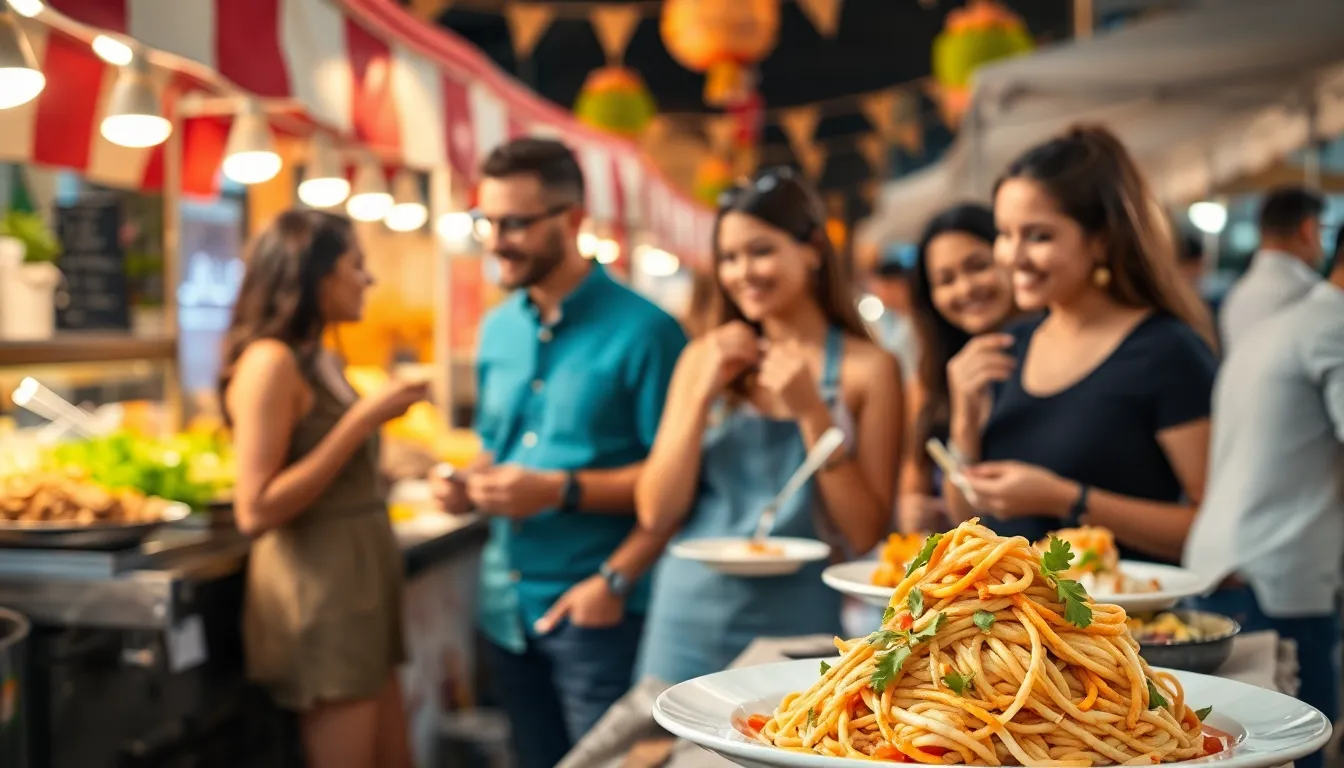Who needs a map when you have a taste bud compass? Traveling is about exploring new landscapes, but let’s be honest: the real adventures often unfold on our plates. Whether it’s street food that could make your taste buds dance or fine dining that leaves you saying, ‘Wow, I didn’t know food could do that,’ culinary tourism is for everyone. Buckle up, because this guide is your passport to the most delicious destinations across the globe, with a sprinkle of humor and a dash of professionalism. Get ready to drool.
Table of Contents
ToggleExploring Culinary Tourism

The Rise of Food-Centric Travel
Culinary tourism has blossomed into a full-fledged phenomenon, transforming how travelers experience the world. Forget traditional sightseeing: food lovers are now opting for experiences that tantalize the palate. This shift is driven by social media, with platforms like Instagram showcasing mouthwatering dishes, compelling others to explore. Travelers are craving authentic culinary experiences that connect them to local cultures and histories. Not only do they taste the food, but through each dish, they also absorb the stories behind it. Let’s just say that a plate of pad Thai can reveal a lot about Thai culture, and it likely tastes way better than a souvenir spoon.
Destinations Known for Culinary Experiences
Street Food Adventures Worldwide
Street food markets pulse with energy, color, and irresistible aromas. From the vibrant taco stands of Mexico City to the sizzling satay stalls in Bangkok, these food havens offer authentic, local flavor at unbeatable prices. Travelers shouldn’t just watch: they should dive headfirst into the chaos. Sampling various street foods allows them to taste different cultural expressions wrapped in every delicious bite.
Fine Dining Around the Globe
On the opposite end of the culinary spectrum, fine dining presents an extravagant experience that focuses on artistry as much as flavor. Cities like Paris, Barcelona, and New York are home to Michelin-starred restaurants where every dish is a masterpiece. Dining in these establishments is not just about eating but about experiencing a blend of innovative techniques and local ingredients in ways that have been elevated to near perfection. Here, meals are designed to be savored slowly, giving diners a taste of luxury.
Local Markets and Food Festivals
Markets and food festivals are cradles of culture where local ingredients shine. Visiting a market often feels like stepping into the heart and soul of a community. From artisanal cheeses in France to fresh spices in Morocco, these places tell stories through their offerings. Food festivals amplify this experience, showcasing regional specialties and inviting everyone, from families to foodies, to immerse themselves in the local culinary scene. The excitement buzzing through the air is contagious, making it hard not to indulge in a little (or a lot) of everything.
Unforgettable Culinary Experiences
Cooking Classes and Workshops
For those who want to take a piece of their culinary adventures home, cooking classes are a perfect escape. Imagine chopping fresh herbs in an Italian villa or learning the secrets to a perfect curry in an open-air market in India. Participants not only get to cook: they also gain insights into local culinary traditions, often led by home cooks who teach you that ‘the best spice is love.’ Getting one-on-one training in a local kitchen transforms travelers from mere tasters to adept cooks ready to impress their friends back home.
Gastronomic Tours and Tastings
Another way to deepen culinary knowledge is through gastronomic tours and tastings. These curated experiences guide participants through a selection of local food and drink, often at different stalls, kitchens, or restaurants, allowing them to sample a range of specialties. It’s a fun way to meet fellow food enthusiasts, swapping recommendations and their own experiences. What’s better than bonding over a shared love of cheese, wine, and bread?
Sustainable and Ethical Eating While Traveling
Culinary Etiquette and Customs by Region
When diving into a new cuisine, understanding local customs and etiquette is essential. From unique dining traditions to specific gestures that may vary greatly by region, these practices can enhance the travel experience. For instance, knowing that you should always say thank you to your host in Japan before beginning to eat, or that you should use your right hand while eating in Middle Eastern countries, can help deeper connections and respect for the culture. Taking the time to learn local norms enhances the travel experience and demonstrates respect for the people and traditions.
The Impact of Local Ingredients in Cuisine
Embracing Regional Flavors and Techniques
Local ingredients play a critical role in shaping a destination’s culinary identity. Farm-to-table movements worldwide are promoting the use of seasonal, locally sourced produce, leading to fresher, more flavorful meals. Foods like heirloom tomatoes in Italy or wild foraged mushrooms in Scandinavia are prime examples of how regional elements can influence dishes, connecting diners to the land and traditions of the area.
Balancing Tradition and Innovation in Culinary Arts
While tradition is important, many chefs are innovating by blending classic techniques with modern flavors and presentations. This balance often creates unforgettable dining experiences, as seen in fusion cuisine that brings together disparate culinary influences in exciting ways. The experimentation of chefs keeps the culinary world vibrant and dynamic, inviting travelers to engage in a never-ending, delicious conversation.





